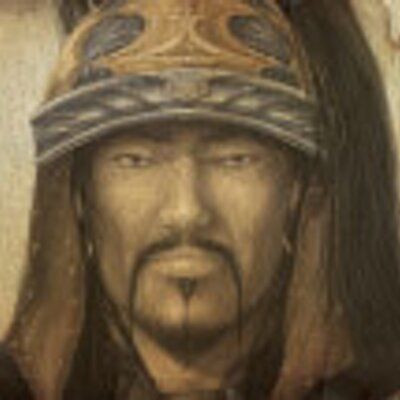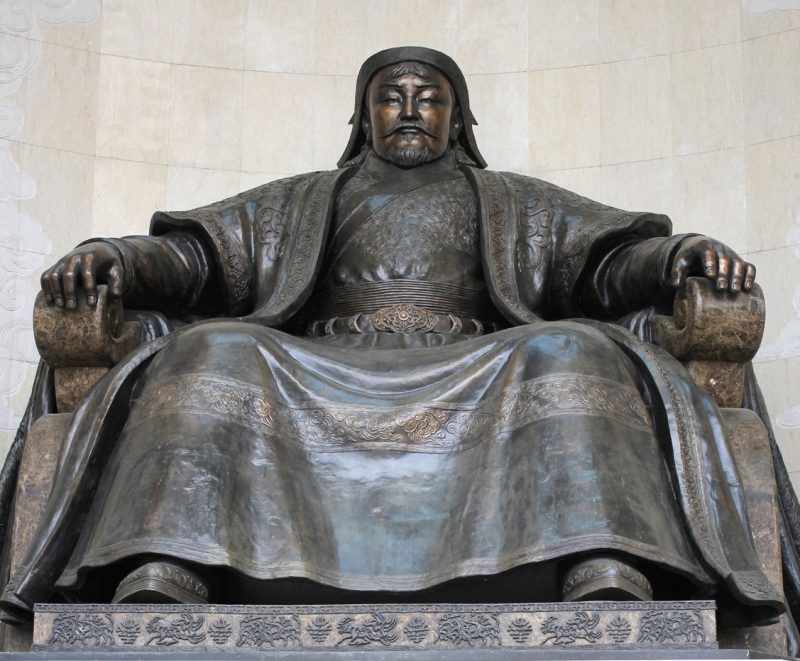Genghis Khan: The Dreaded One
Mar 24, 2019 • 48 views

Genghis Khan (1162-1227), the dreaded Mongol, is disputably the greatest conquerors of all time whose fame rivals that of Alexander the Great. In popular culture, he is also popularly known for his avatar of savagery and barbarism. Hailing from a humble beginning, he went on to establish the largest land empire in the history of the human race. The Mongol Empire covered most of the known world, spanning across 12 million contiguous square miles- a size nearly the whole of Africa.
Born as Temujin (later Genghis Khan), in 1162, near the border of modern Mongolia and Siberia, his own clan deserted him and his family of six siblings and a mother, following the murder of his father by an enemy clan. The incessant fights and plunder amongst the dozens of Central Asian nomadic tribes was the norm of the day which invariably had a profound impact on the personality of the young Temujin. He killed his older half-brother to take charge of his poverty-stricken household. In 1178, he married Borte, with whom he had four sons and an unknown number of daughters. She was kidnapped by an enemy clan and was rescued by the daring Temujin, which earned him a reputation as a warrior and helped him garner support from the fellow tribesmen.
Contrary to the customs of his land, he put competent men in key positions within his army and executed his enemy clan leaders while assimilating the remaining into his own clan. By 1205, he had obliterated all his opponents which included his former best friend Jamuka. A year later, he called for a meeting of all the representatives of his territories and established a Nation which is quite similar to the modern day Mongolia. This event was marked by the proclamation of the name “Chinggis Khan” which roughly translates to “Universal Ruler”.

Genghis Khan ruled over a population of almost one million. What very few know, is that he took some unprecedented steps towards the betterment of his society. He established one of the first international postal system known as the "Yam". This medieval courier service was made up of a well-organized series of post houses and way stations strung across the Empire. He ordered the adoption of a writing system, conducted a regular census and granted diplomatic immunity to foreign ambassadors. He forbade the kidnapping and selling of women, banned the enslavement of any Mongol and made the theft of livestock a crime punishable by death. He was an animist but allowed religious freedom, a phenomenon unknown to people of those times. He never allowed anyone to paint his portrait, sculpt his image or engrave his likeness on a coin. It is after his death that people started sculpting his image. Khan had a strong army which was the result of a quantum leap in military technology. The speed and mobility of Mongol warriors, their uncanny horsemanship, their love for bow and arrow, the accuracy of their long-range shootings coupled with Khan’s policy of “Surrender or Die”, made the Mongols unbeatable at their game.
Genghis’ first campaign outside Mongolia took place against the Xi Xia Kingdom of Northwestern China. He waged a series of raids and led a siege on its capital city of Yinchuan. Though their attempt to flood the city failed, the Xi Xia ruler pledged his allegiance to Genghis Khan and presented him with a tribute. Khan vanquished people from the Adriatic to the Pacific, reaching as far as modern Austria, Croatia, Finland, Poland, Hungary, Vietnam, Burma, Japan and Indonesia. Khan and his sons waged wars on these two fronts simultaneously and annexed Russia in the winters- a feat which eluded both Napoleon and Hitler. This can
be attributed to the advanced military technology and warfare skills of the Mongols which brought archery to its acme.

After his return to Mongolia in 1225, he received internal injuries when a horse threw him on the ground. He pressed on with his campaigns but never recovered from the injuries. He died on August 18, 1227, and was laid to rest at a place still unknown to us.
